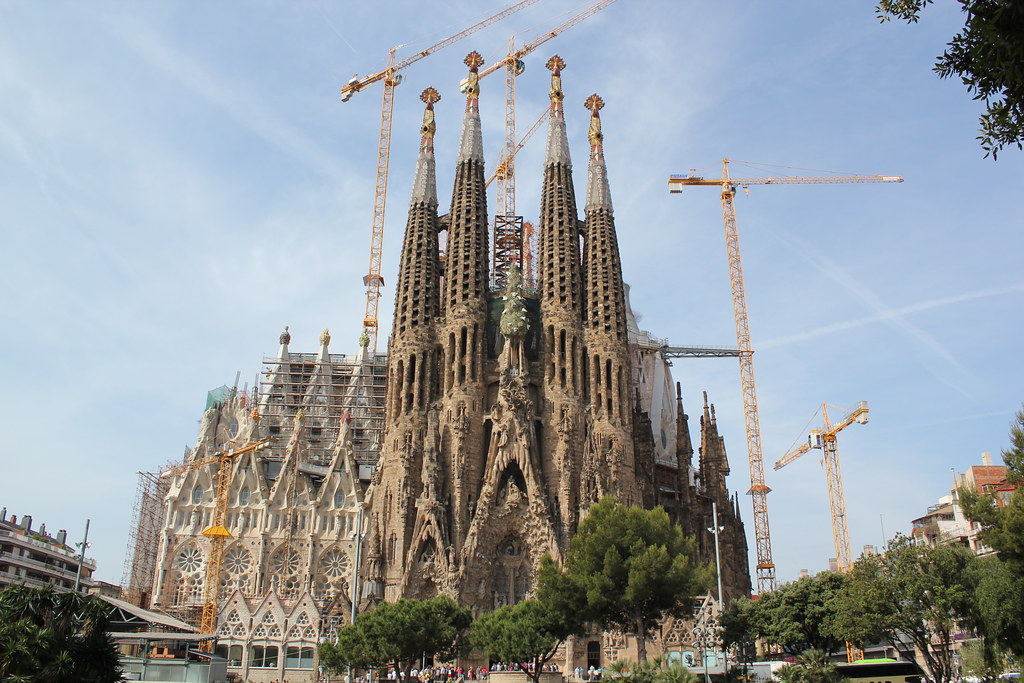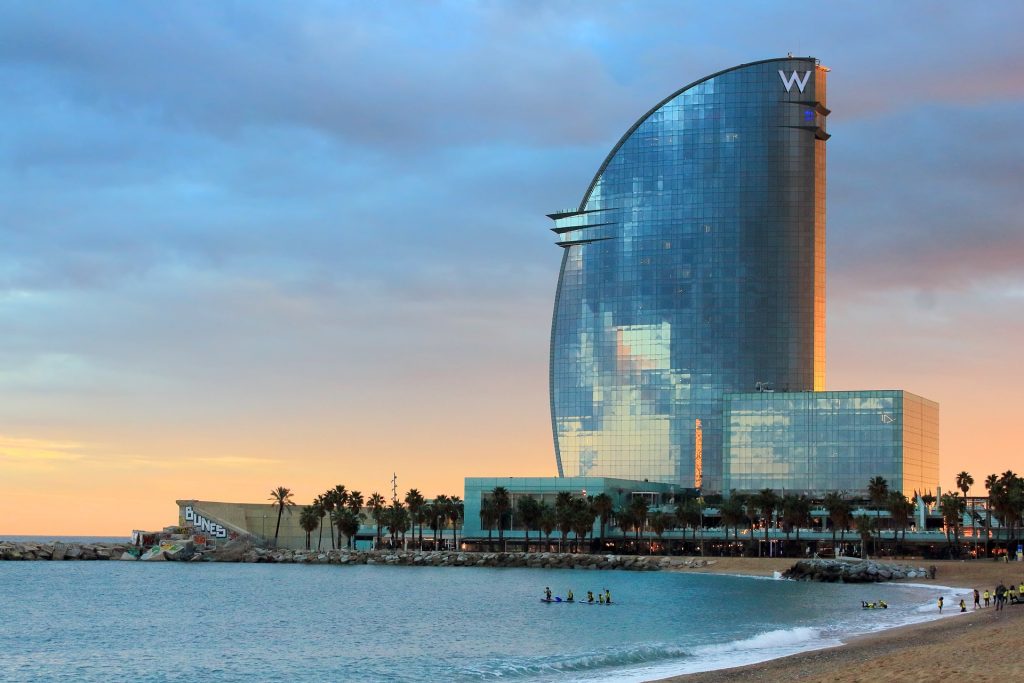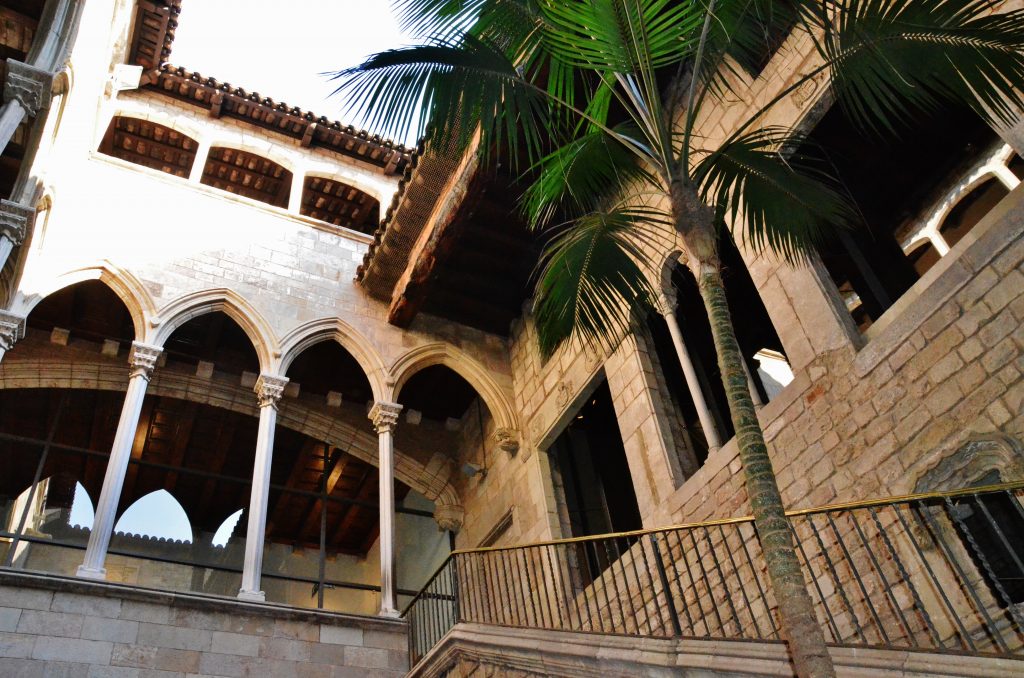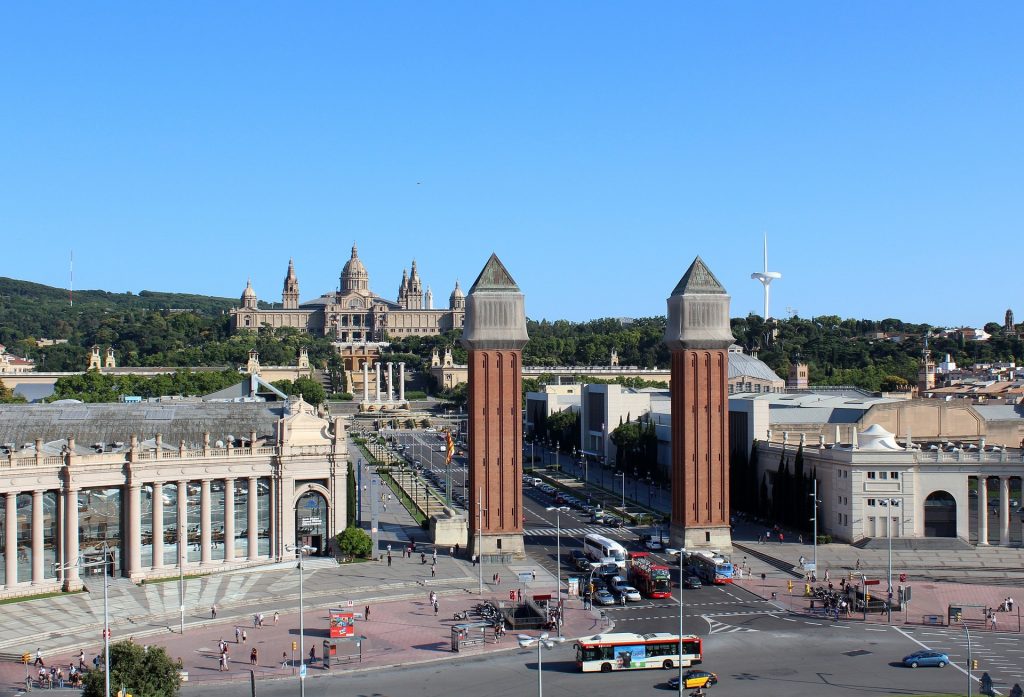Guia de viagem Barcelona

O que Barcelona tem de tão atraente?
Barcelona é um destino que atrai turistas do munto inteiro duranto todo o ano, muito por conta de suas atrações e clima. O clima em Barcelona é ameno e muito agradável, a temperatura média da cidade é de 13 graus, e cerca de 25 graus no verão. No entanto, fica mais frio à medida que o inverno se aproxima por causa das influências de resfriamento do Oceano Atlântico e das montanhas.
Barcelona é uma cidade repleta de cultura, e dona do maior número de edifícios históricos da Europa, mas os turistas também são atraídos por suas belas praias e pontos de referência.
Quais pontos turísticos visitar em Barcelona?
A cidade tem muito a oferecer aos visitantes e moradores locais, e suas opções vão de praias, até montanhas, florestas e lagos. No entanto, Barcelona também abriga muitas atrações turísticas, pois conta com uma rica cultura e arquitetura, que se reflete em suas ruas, praças e edifícios monumentais.
Além disso, a capital catalã abriga mais de 45 museus que mostram a diversidade cultural do local, sendo alguns desses museus voltados para a arte medieval. Portanto, é seguro dizer que Barcelona nunca te deixará sem coisas para fazer, ou lugares para explorar!
Parque Güell

O Parque Guell é um parque municipal no distrito de Poble-Sec, o local já foi um pomar “La Vall d’Hebrón”, que pertencia à propriedade da família Terné e mais tarde ficou conhecido como L’Ametlla de Mar, até ser comprado por Eusebi Güell em 1894.
Sagrada Familia

A Sagrada Família é uma catedral católica romana que está em construção desde 1882, e será concluída por volta de 2050, segundo estimativas do plano original do arquiteto Antoni Gaudí.
Praia de Barceloneta

A Praia de Barceloneta é uma das poucas praias de Barcelona que tem um ótimo ambiente, tanto durante o dia quanto à noite. Além disso, Barceloneta é uma praia urbana, o que a torna muito popular entre os turistas que não tem muito tempo disponível longe do movimento da cidade.
Museu Picasso

O Museu Picasso é uma visita obrigatória em Barcelona, pois o local oferece muitas ofertas especiais que não são anunciadas ao público. Por exemplo, a visita ao museu é gratuita aos sábados e domingos, mas esta promoção só é mencionada no mural exterior do museu e não nas redes sociais.
Montjuïc

Montjuïc é uma colina em Barcelona, situada a oeste do centro da cidade, e foi um lugar historicamente fortificado. Atualmente o local abriga diversos tipos de atrações, como o Estádio Olímpico, o Museu Militar e vários outros pontos turísticos. Se você estiver visitando Barcelona, você definitivamente deve conferir Montjuïc.
Onde se hospedar em Barcelona?
Existem várias opções para se escolher ao decidir onde ficar em Barcelona, uma vez que a cidade abriga diversos albergues, hotéis e apartamentos localizados perto de atrações como a Sagrada Família e o Parc Guell. A indústria hoteleira sempre foi um dos pilares econômicos de Barcelona.
Barceloneta é um exemplo de como o Barcelona conseguiu preservar sua identidade, pois é um dos bairros mais populosos da cidade e sempre foi exclusivamente residencial, sem nenhuma infraestrutura turística. A área sofreu uma grave decadência urbana ao longo do tempo, e sua população caiu de 40.000 habitantes em 1970 para apenas 5.000 hoje. No entanto, apesar desses desafios, Barceloneta resistiu e agora o bairro é um dos lugares mais procurados em Barcelona para galerias de arte, restaurantes e lojas.
Gràcia
Gràcia foi um dos primeiros bairros de Barcelona e ainda mantém seu antigo charme. O local é conhecido por suas construções coloridas e ruas estreitas, típicas de bairros antigos, e sua rua principal é La Rambla de Gràcia, que tem todo tipo de lojas, cafés e bares.
No entanto, há muitas coisas para se fazer na área, como passear por La Rambla de Gràcia, desfrutar de algumas tapas em uma das dezenas de restaurantes, e visitar o Centro Cultural Princesa Sofia, que tem um auditório com capacidade para 400 pessoas. Gràcia oferece muitas coisas aos turistas, e é bastante conhecida por seu mercado e seu famoso restaurante La Clandestina.
Eixample
O bairro Eixample de Barcelona é um excelente exemplo de como um ambiente urbano pode contribuir para sua própria história. Antigamente o bairro era pequeno e confinado, mas à medida que a cidade se expandiu, o local se tornou um exemplo do futuro. Os princípios de planejamento modernistas usados nesta área ainda estão em uso hoje para criar bairros habitáveis e atraentes.
Eixample foi um dos primeiros exemplos de planejamento urbano para a sustentabilidade. O plano original de Barcelona foi criado por Ildefons Cerdà em 1859, mas à medida que a cidade crescia, o plano de Cerdà não era mais suficiente. Os bairros que seguiram seu projeto incluíam mais áreas para morar, e menos para compras ou indústrias. Esses princípios ainda são aplicados ao projetar novos bairros hoje.
Bairro Gótico
O Bairro Gótico é a parte antiga e medieval da cidade, cheia de história e diferente das outras partes de Barcelona. O local possui ruas estreitas, e belos edifícios que ainda estão cercados por suas muralhas originais do século XIII.
O bairro é um lugar interessante para muitos tipos diferentes de turistas, pois tem algo a oferecer para todos. A região tem uma vida noturna que vai desde bares típicos com música ao vivo, até pequenos clubes de jazz em alguns recantos. No entanto, a região também oferece lojas que atendem a todos os tipos de turistas, como lojas de souvenirs, butiques de roupas e restaurantes com pratos típicos catalães.
El Raval
El Raval é um dos bairros mais antigos de Barcelona, e um local muito especial, histórico e animado da cidade. O bairro tem uma longa e tumultuada história, pois a quatrocentos anos atrás era um bairro densamente povoado, com muitas oficinas onde os artesãos produziam seus produtos. Na segunda metade do século XIX, este bairro tornou-se uma das maiores favelas da Europa por não ter rede de esgoto e quase não havia fontes de água potável.
Nas últimas décadas, o bairro foi restaurado e renovado para se tornar o que é hoje, sendo uma das áreas mais procuradas de Barcelona. A região era um bairro operário dominado por pequenas indústrias, mas ficou famosa por sua vibe artística, sua forte identidade catalã e uma vida noturna vibrante.
Sant Antoni
Sant Antoni, é um bairro conhecido por sua arquitetura, vida noturna e muitos espaços culturais. Além disso, a região oferece muitas ofertas para os turistas que querem visitar Barcelona, são mais de 50 restaurantes, 20 bares e 12 salas de degustação de vinhos.
Observando a história de Sant Antoni, percebe-se que o local já foi um importante bairro da zona industrial de Barcelona. A cidade queria transformar a região numa zona mais residencial, mas devido ao seu passado industrial e à presença de antigas fábricas, a área se manteve como um bairro operário com muita história.